Behind the beauty of Ramleela
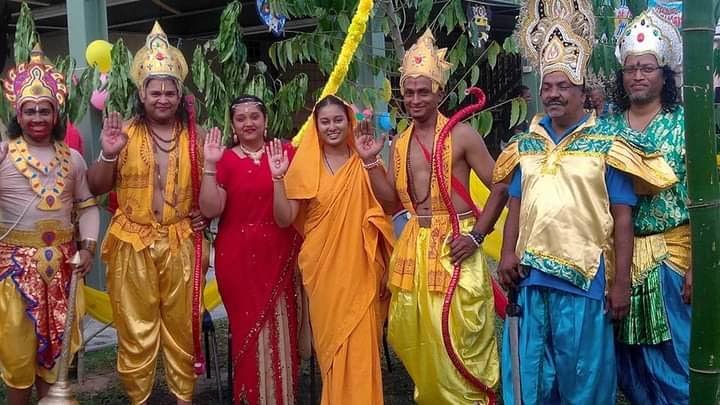
BAVINA SOOKDEO
Pundit Balliram Chan is a Ramleela and Krishna Leela (also called Krishenleela) costume creator, a task that requires great skill and knowledge of Hindu scriptures.
As a child, Chan would sit enraptured, listening to Hindu scriptures and stories being read by his late father, Lackram Chan.
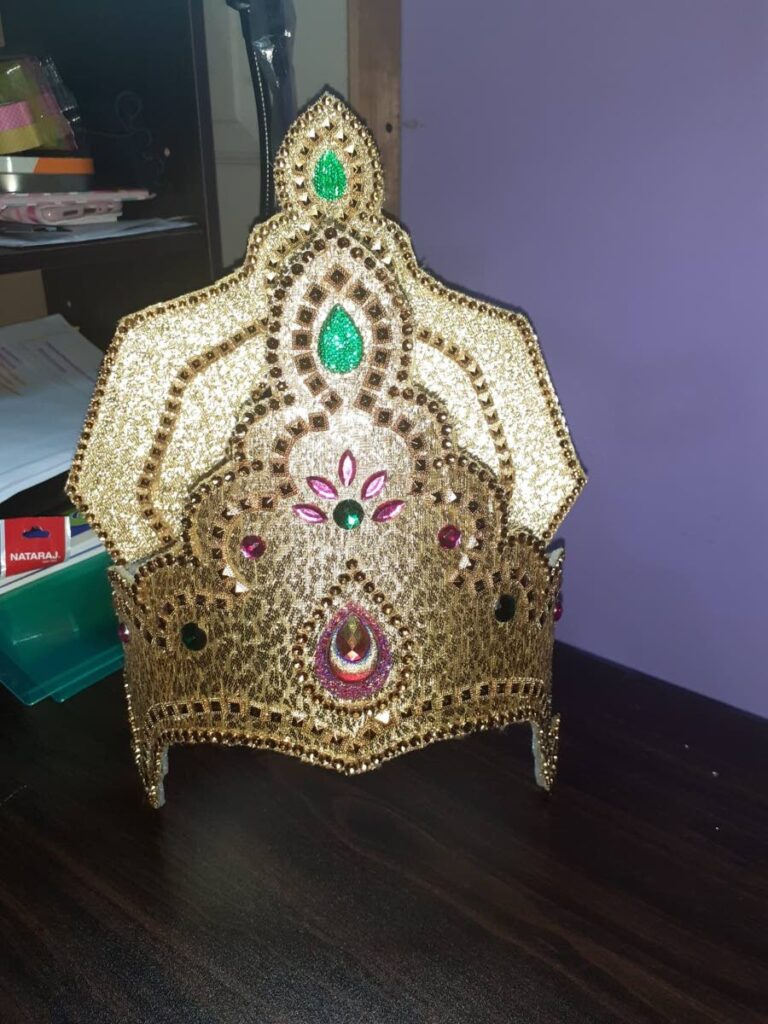
Propelled by the knowledge and fervour for his religion imparted by his father, he embarked on a journey into the world of Krishna Leela, and began performing simple roles in Ramleela at nine, at Bonne Aventure Ground, Gasparillo.
In 2013, his group, the Krishna Rama Mandir and Cultural Group, ventured into their own Krishna Leela production on the Guaracara Recreation Ground.
Today, Pundit Balliram Chan remains deeply involved in both Krishna Leela and Ramleela, carrying on the rich tradition.
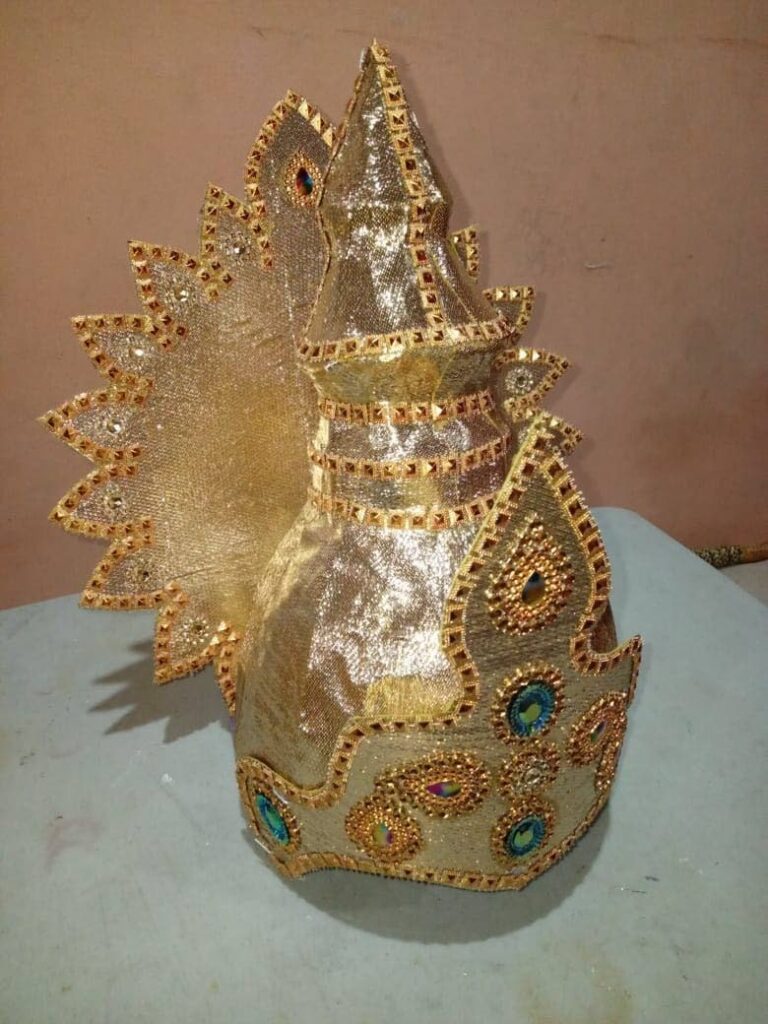
Ramleela is the play depicting the life of Lord Rama on earth, as chronicled in the Tulsidas Ramayana.
The annual spectacle involves months of preparation. Communities rally together to create props and costumes and rehearse their roles, with participants often fasting to honour the event's religious significance.
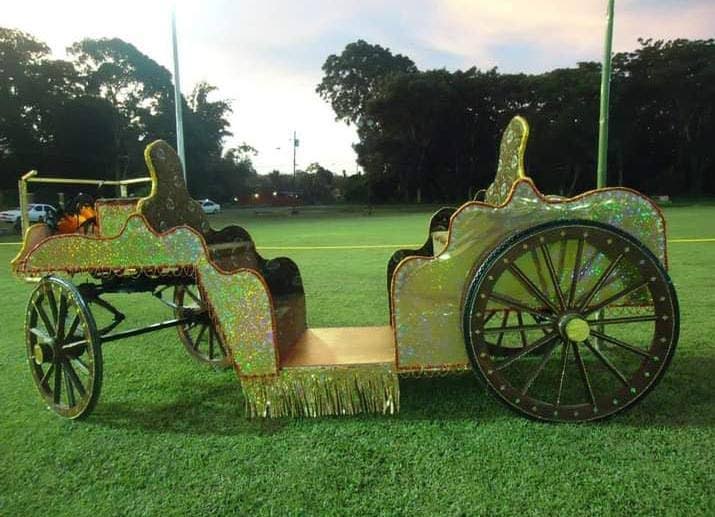
The performance narrates the epic tale of King Ram, including his challenging 14-year exile in the forest and his eventual victory over the malevolent king Ravana. The climax of Ramleela, usually on the final night, entails the meticulous construction and subsequent burning of an effigy of Ravana, symbolising the triumph of good over evil.
Ramleela traditionally takes place approximately three weeks before Divali, marking the start of Divali festivities. Typically staged in open fields or village playgrounds over nine-ten days, this spectacle serves as a means to impart religious values and bring the Ramayana to life for those who may not be able to read it.
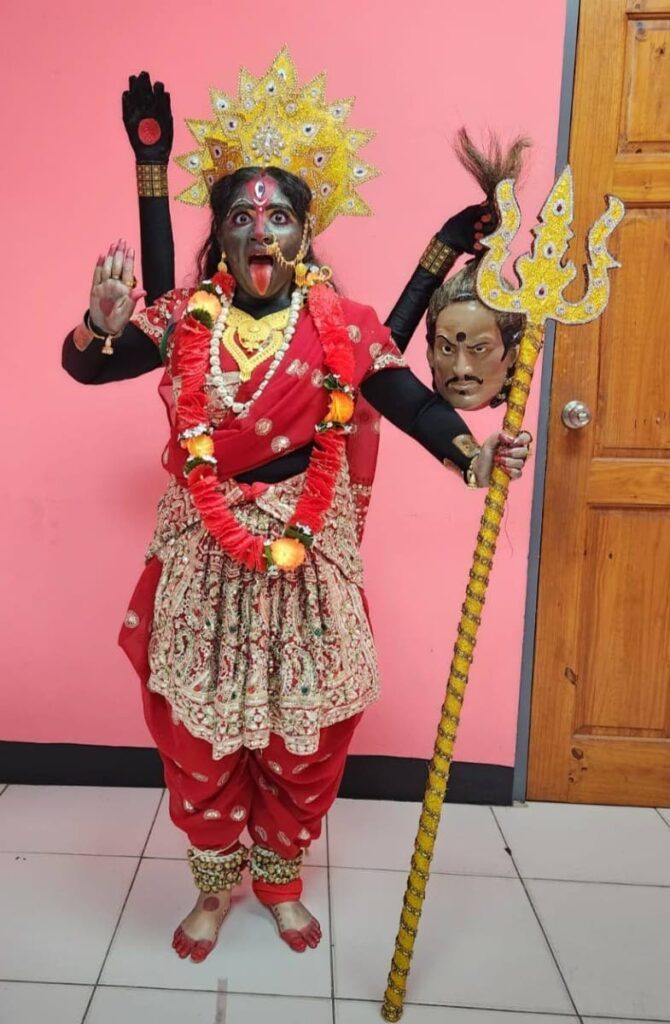
Notably, the costumes and headpieces worn by the actors play a significant role in Ramleela and Krishna Leela performances. When Chan, now 43, became involved with Krishna Leela, he faced the challenge of creating costumes.
After unsuccessful attempts to learn from other Ramleela groups, Chan resorted to disassembling a headpiece to understand its construction.
Starting with a simple design on bristol board, he honed his skills, progressing from one-piece crowns (with just the crown at the front and a band to go around the head) to two-piece crowns (with the front and back held together by two bands) and eventually crafting intricate domes that encompass the entire head.
When he started making the costumes for his group’s Krishna Leela and other groups saw them, they asked him to make costumes for their Ramleela (which is more popular than Krishna Leela locally). Today, he gets orders from many groups for Ramleela and from dance groups.
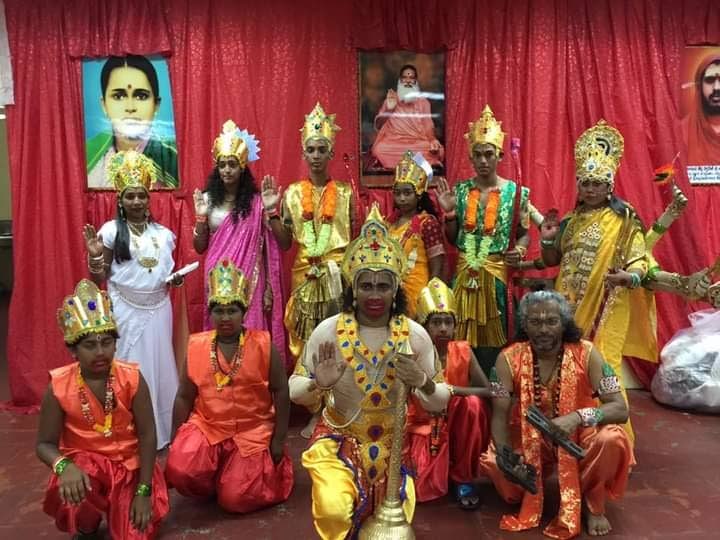
While his first crown was designed on cardboard, he now uses metal sheeting plates used in newspaper printing, PVC, fabric, gems, fibreglass rods and edgings and sequins. He still uses bristol board to create the patterns.
Notably, the crown, often worn by main characters in Ramleela, remains one of the most sought-after pieces he creates, with each demanding approximately two weeks of meticulous work.
His craftsmanship has extended to other aspects of costuming, including pieces like slave bands, bows and arrows,
trishuls (tridents),
mukdars (maces), and intricate chains. His expertise has even led him to create a chariot.
As the preparations for Ramleela involve a large cast, sometimes 40-50 people, Chan’s busiest time begins approximately two months beforehand, ensuring that every participant is outfitted impeccably. His wife, Amrita, is his sole assistant. Chan has already introduced his four children to Ramleela and plans to teach them the art of costume-making in the future.
Chan expressed concern about the slow decline of this artform in Trinidad and Tobago. He wants to lead workshops to pass on his knowledge to the younger generation, hoping to spare them the challenges he faced when learning – but lacks the funding to do so.
In addition to his work in costuming, Chan also specialises in creating murtis, statues of Hindu gods and goddesses. He is committed to preserving this artform, which he believes is gradually diminishing in TT.
Chan has showcased his creations at various events, including the Epic Hanuman Chanting, hosted multiple times in Trinidad, the Lloyd Best Institute of the Caribbean for various events, and at UWI, for those doing cultural studies. Additionally, through the Ramleela Council, he attended several events where he displayed his pieces for the Prime Minister.
Asked if he had a message to share during this auspicious period, Chan called for support from those in power to uplift the upcoming generation and safeguard the culture.
“We need the assistance to help uplift the upcoming generation and our culture.
"To the Ramleela groups: please come together and let us share our knowledge so we can carry our culture forward.
"Trinidad’s Ramleela is one of the largest in the Caribbean, with the event slowly dying in the other islands, and for this reason, we must not only showcase our Ramleela, but work hard to preserve it.”

Comments
"Behind the beauty of Ramleela"